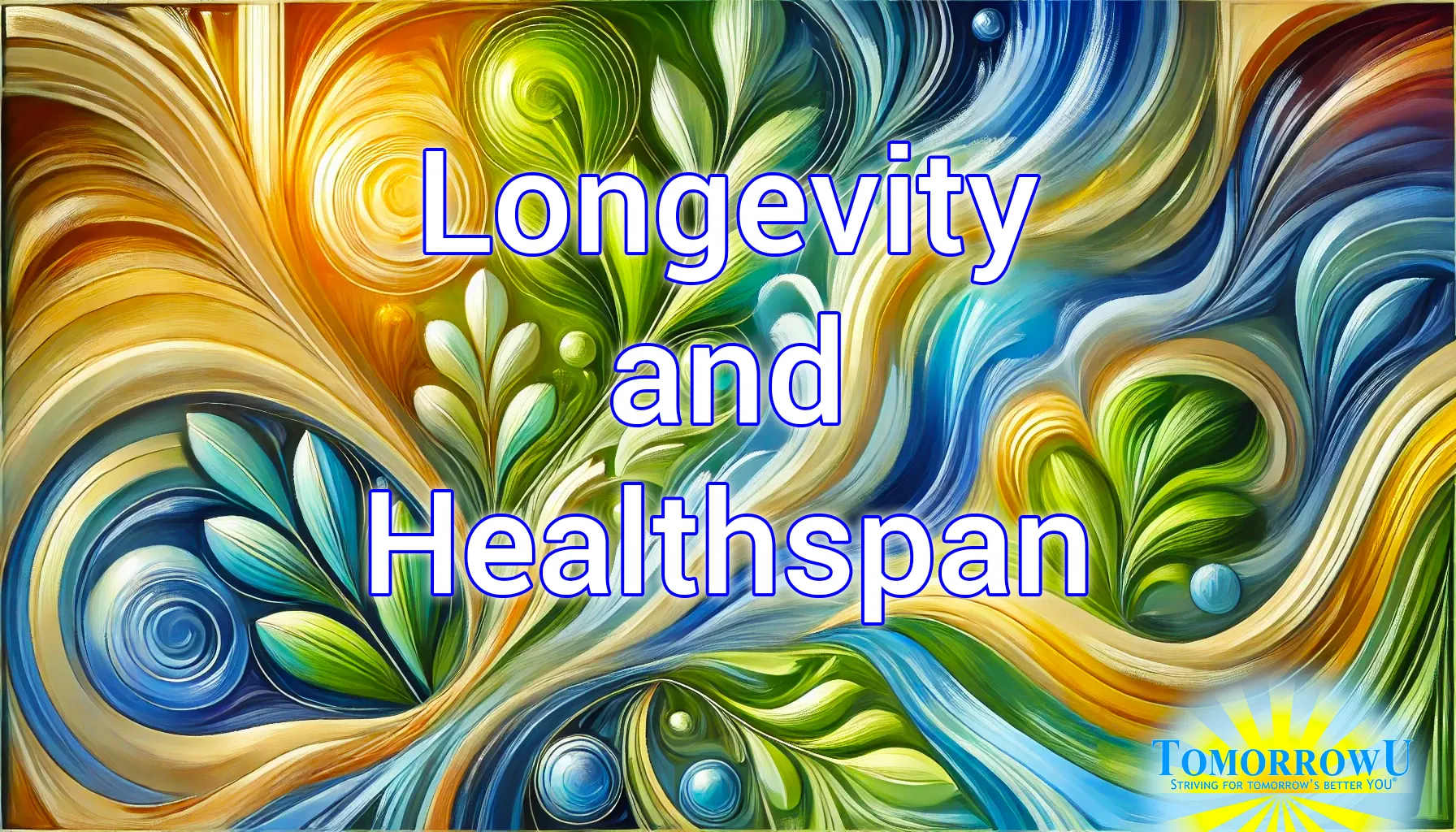In the modern era, the quest for longevity isn’t merely about adding years to life but enhancing the quality of those years—a concept known as “healthspan.” As we delve into 2025, societies are increasingly shifting their focus to living better, healthier lives well into old age. This transformative approach spotlights personalized nutrition, holistic health practices, and cutting-edge anti-aging technologies. It also underscores practical steps anyone can take—often without a doctor’s intervention—to improve overall health and well-being.
By redefining what it means to age, we’re shaping a future in which the focus moves from merely extending the number of years to enjoying vitality and independence for as long as possible.
The Concept of Healthspan
Healthspan refers to the period of life spent in good health, free from chronic diseases and significant disabilities. This differs from lifespan, which measures total years lived. In many cultures, the idea of living well often gets overshadowed by the desire to live longer. However, extensive research now emphasizes the importance of “compressing morbidity,” meaning reducing the time spent in poor health at the end of life.
- WHO’s Approach: The World Health Organization’s Global Strategy and Action Plan on Ageing and Health highlights enhancing functional ability throughout all life stages, thereby promoting a longer healthspan.
- Real-World Context: A person might reach 85 years old, but what matters is how many of those years were spent free from chronic disease, mobility issues, or cognitive decline.
Key Takeaway: Focusing on healthspan helps shift our attention to both longevity and quality of life.
Personalized Nutrition
Personalized nutrition has emerged as a cornerstone of modern longevity strategies. Rather than adopting a one-size-fits-all diet, this approach tailors dietary recommendations based on an individual’s genetic profile, lifestyle, and health status.
- Nutrigenomics: Emerging research reveals how genes interact with food, offering insights into dietary strategies that can help prevent or manage various health conditions.
- Tech Integration: Wearable apps and at-home testing kits now analyze blood biomarkers or microbiome data, giving real-time feedback on how dietary choices affect gut health, metabolism, and inflammation.
By considering these factors, personalized nutrition helps optimize diet for each individual, supporting a healthier, more resilient body over the long term.
Key Takeaway: Adopting a diet tailored to your genetic and metabolic profile can significantly reduce disease risk and improve overall vitality.
Holistic Health Practices
Modern health philosophies increasingly emphasize holistic approaches that address the physical, emotional, mental, and even spiritual aspects of well-being. This integrated strategy is particularly effective for those looking to extend their healthspan.
Mindfulness and Meditation
Regular mindfulness and meditation practices can improve mental health, reduce stress, and even slow cellular aging by reducing oxidative damage and maintaining telomere length.
Yoga and Tai Chi
Low-impact exercises like yoga and tai chi boost flexibility, balance, and cognitive function. In older adults, these practices reduce the risk of falls and can improve mental clarity.
Sauna Therapy for Longevity
Studies show that sauna use can decrease total morbidity by as much as 40%, particularly by improving cardiovascular health and reducing stress.
Natural Remedies and Herbal Medicine
Growing interest in compounds like curcumin, resveratrol, and fisetin reflects the broader trend toward natural interventions. These substances show promise for their antioxidant and anti-inflammatory effects.
Sleep Optimization
Insufficient sleep can accelerate aging by undermining hormone balance and cellular repair processes. Strategies like consistent bedtimes, magnesium supplementation, and mindfulness routines help boost sleep quality.
Key Takeaway: Integrating holistic methods—such as sauna, mindfulness, and natural remedies—can yield profound benefits for both body and mind, setting the stage for a more resilient aging process.
Actionable Steps for Longevity Without a Doctor
Many practical measures for improving your healthspan don’t require prescription medication or complex medical interventions:
- Adopt a Nutrient-Dense Diet
- Prioritize whole, minimally processed foods.
- Limit sugar and refined carbohydrates.
- Experiment with Intermittent Fasting
- Time-restricted eating (e.g., 16:8) supports metabolic health and cellular repair.
- Stay Physically Active
- Incorporate daily movement, including strength training, to maintain muscle mass and function.
- Practice Mindfulness and Stress Reduction
- Use meditation apps or simple breathing exercises to manage stress.
- Optimize Sleep
- Maintain a regular sleep schedule and create a restful bedroom environment.
- Stay Hydrated
- Adequate water intake is vital for every bodily function.
- Foster Social Connections
- Strong social ties can bolster mental health and cognitive function.
- Limit Alcohol and Avoid Smoking
- These habits significantly impact longevity and disease risk.
- Pursue Lifelong Learning
- Challenge your mind with new skills, languages, or puzzles.
- Get Out in Nature
- Regular exposure to greenery helps reduce stress and supports immune health.
Key Takeaway: Simple lifestyle shifts—like a healthy diet, exercise, and mindfulness—can collectively have a profound impact on extending healthspan.
Cutting-Edge Anti-Aging Technologies
While lifestyle modifications are foundational, emerging technologies are pushing the boundaries of what’s possible in longevity science.
Senolytics
Compounds like dasatinib and quercetin aim to selectively clear senescent cells—the so-called “zombie” cells that accumulate with age and drive inflammation. Early studies suggest that removing these cells may lower the risk of chronic diseases.
Gene Therapy
Technologies like CRISPR allow researchers to edit genes responsible for DNA repair and cell aging. Though still in early stages, these interventions could one day help slow or even reverse age-related deterioration.
Regenerative Medicine
From stem cell therapies to tissue engineering, regenerative medicine seeks to replace or rejuvenate aging organs and tissues. Clinical trials are ongoing, evaluating the feasibility and long-term safety of these approaches.
Wearable Tech for Health Monitoring
Beyond simple fitness tracking, new wearables aim to monitor aging biomarkers such as hormone levels or oxidative stress in real time. Early detection of metabolic or hormonal imbalances can empower individuals to make targeted lifestyle changes sooner.
Key Takeaway: While the future of anti-aging technology is bright, many of these innovations are still experimental. Lifestyle factors remain the most accessible and immediately impactful routes to better healthspan.
Conclusion
The shift toward enhancing healthspan rather than merely extending lifespan marks a significant evolution in how we view aging. Advances in personalized nutrition, holistic health practices—like sauna therapy—alongside groundbreaking anti-aging technologies enable individuals to enjoy a higher quality of life for longer.
Yet, it’s the simple, daily habits—mindful eating, regular exercise, restful sleep, and nurturing social connections—that remain the most powerful interventions we have. By integrating these practices and staying informed about emerging scientific breakthroughs, we can collectively redefine aging as a period of growth, fulfillment, and vitality.
Final Practical Tips
- Choose a personalized eating plan that fits your genetic profile.
- Incorporate regular sauna sessions, if accessible, to boost cardiovascular health.
- Balance activity and rest—both are crucial for healthy aging.
- Stay socially and mentally engaged; human connection is invaluable.
- Keep an eye on emerging longevity research, but remember that foundational habits make the biggest difference.
Tomorrow’s better YOU starts with the choices you make today. By embracing these steps and insights, we all move closer to a future defined by longer, healthier, and more fulfilling lives.
References
- Ahluwalia, M. K. (2021). Nutrigenetics and nutrigenomics—a personalized approach to nutrition. Advances in Genetics, 110, 277-340. https://doi.org/10.1016/bs.adgen.2021.08.005
- Amor, C., Fernández-Maestre, I., Chowdhury, S., Ho, Y. J., Nadella, S., Graham, C., Carrasco, S. E., Nnuji-John, E., Feucht, J., Hinterleitner, C., Barthet, V. J. A., Boyer, J. A., Mezzadra, R., Wereski, M. G., Tuveson, D. A., Levine, R. L., Jones, L. W., Sadelain, M., & Lowe, S. W. (2024). Prophylactic and long-lasting efficacy of senolytic CAR T cells against age-related metabolic dysfunction. Nature aging, 4(3), 336–349. https://doi.org/10.1038/s43587-023-00560-5
- Fekete, M., Szarvas, Z., Fazekas-Pongor, V., Feher, A., Csipo, T., Forrai, J., Dosa, N., Peterfi, A., Lehoczki, A., Tarantini, S., & Varga, J. T. (2022). Nutrition Strategies Promoting Healthy Aging: From Improvement of Cardiovascular and Brain Health to Prevention of Age-Associated Diseases. Nutrients, 15(1), 47. https://doi.org/10.3390/nu15010047
- Franzago, M., Santurbano, D., Vitacolonna, E., & Stuppia, L. (2020). Genes and Diet in the Prevention of Chronic Diseases in Future Generations. International journal of molecular sciences, 21(7), 2633. https://doi.org/10.3390/ijms21072633
- Fried, L.P., Wong, J.E.L. & Dzau, V. A global roadmap to seize the opportunities of healthy longevity. Nat Aging 2, 1080–1083 (2022). https://doi.org/10.1038/s43587-022-00332-7
- Kashyap, D., Tuli, H. S., Sak, K., Bishayee, A., & Sharma, A. K. (2019). Molecular targets of curcumin for cancer therapy: An updated review. Tumor Biology, 41(5). doi:10.1177/1010428319847469
- Laukkanen, T., Khan, H., Zaccardi, F., & Laukkanen, J. A. (2018). Association between sauna bathing and fatal cardiovascular and all-cause mortality events. JAMA Internal Medicine, 175(4), 542-548. doi:10.1001/jamainternmed.2014.8187
- Scott, A. J., & Gratton, L. (2020). The 100-Year Life: Living and Working in an Age of Longevity. Bloomsbury Publishing
- Scott, A.J., Ellison, M. & Sinclair, D.A. The economic value of targeting aging. Nat Aging 1, 616–623 (2021). https://doi.org/10.1038/s43587-021-00080-0
- Sempionatto, J. R., Lasalde-Ramírez, J. A., Mahato, K., Wang, J., & Gao, W. (2022). Wearable chemical sensors for biomarker discovery in the omics era. Nature reviews. Chemistry, 6(12), 899–915. https://doi.org/10.1038/s41570-022-00439-w
- Walker, M. (2017). Why we sleep: Unlocking the power of sleep and dreams. Scribner.
- World Health Organization. (2017). Global strategy and action plan on ageing and health. World Health Organization. Retrieved from https://www.who.int/publications/i/item/9789241513500
- Zhu, Y., Tchkonia, T., Pirtskhalava, T., Gower, A. C., Ding, H., Giorgadze, N., … & Kirkland, J. L. (2015). The Achilles’ heel of senescent cells: From transcriptome to senolytic drugs. Aging Cell, 14(4), 644-658. doi:10.1111/acel.12344
Note: Always consult with a healthcare professional before making significant changes, especially if you have existing health conditions.




